Top 10 Outsourced Design Service Providers (2026)
Learn about outsourced design services, their benefits for businesses, and how to choose the right design partner.

You don’t need a twenty‑person design department to ship a polished product. Good design is not a luxury; it’s essential for early traction and long‑term growth. When you’re building on limited resources, working with outsourced design services lets you access specialized talent without adding headcount.
The global outsourcing market was worth about $302 billion in 2024 and is projected to reach $525 billion by 2030. That surge isn’t just about cost—Deloitte’s 2024 survey showed that 80% of executives plan to maintain or increase third‑party outsourcing, citing access to talent and quicker delivery as bigger drivers than price.
In this article, I’ll unpack why and when to outsource, profile ten reputable providers, and help you decide which model fits your product and workflow.
When should you outsource design?
1) You’re pre‑MVP and need polish
Early users judge a product in seconds. Research suggests that first impressions are 94% design‑related and that up to 75% of users trust a brand more when the interface looks thoughtful. At this stage you’re still validating a problem, so bringing on a full design team is overkill. A lightweight external partner can build a design system, create a cohesive visual style, and hand over assets you can reuse as you iterate.
2) You’re post‑launch and need to ship faster
After launch the challenge shifts from making something to making it better. As you add features and work toward product–market fit, design work scales up. Many companies realize they can’t keep up with marketing and product design simultaneously. According to Skillademia’s 2025 statistics, 41% of businesses rely on in‑house graphic designers, 35% edit their own images, and 24% outsource their digital design needs. Outsourcing gives you a flexible bench. You can assign ad creatives today and dashboard designs tomorrow without running a hiring cycle.
3) Your in‑house team is blocked or overloaded
Even experienced design teams hit capacity. When engineers are ready to build but design is stuck, progress stalls. External designers can break bottlenecks by taking on production tasks—illustrations, iconography, UI polish—while your internal team focuses on high‑impact discovery and strategy. McKinsey’s research on the business value of design, widely quoted across the industry, found that companies with strong design practices grow revenues at nearly twice the rate of their peers. Keeping momentum matters.
4) You want to explore rebranding without a full redesign
Maybe your brand looks dated or misaligned with your market, but you aren’t sure how far to go. Engaging an agency or freelancer on a short contract lets you test new directions through mood boards, logomarks and style tiles. If the direction clicks, you can invest in a full rollout; if not, you haven’t committed months of internal resources.
5) You need fast iteration for marketing, pitch decks or experiments
Growth teams live on tight timelines. Need to whip up a deck for investors? Update hero images for a product hunt launch? External teams with subscription models can turn around assets overnight. When 80% of users abandon a site that doesn’t display correctly on their phones, being able to adjust quickly across screens isn’t optional. Outsourcing makes that possible without burning out your core team.
Top 10 outsourced design service providers
This list isn’t exhaustive, but it covers a range of models—from studios that feel like an in‑house partner to marketplaces for one‑off tasks. Each entry describes what they do well, who they suit, and where to learn more.
1. Parallel
- Overview: Parallel is a design‑led studio that I run. We act as an extension of early‑stage product teams, bridging brands and products. Our approach combines strategy and hands-on execution, guiding startups through building systems, prototypes and polished interfaces.
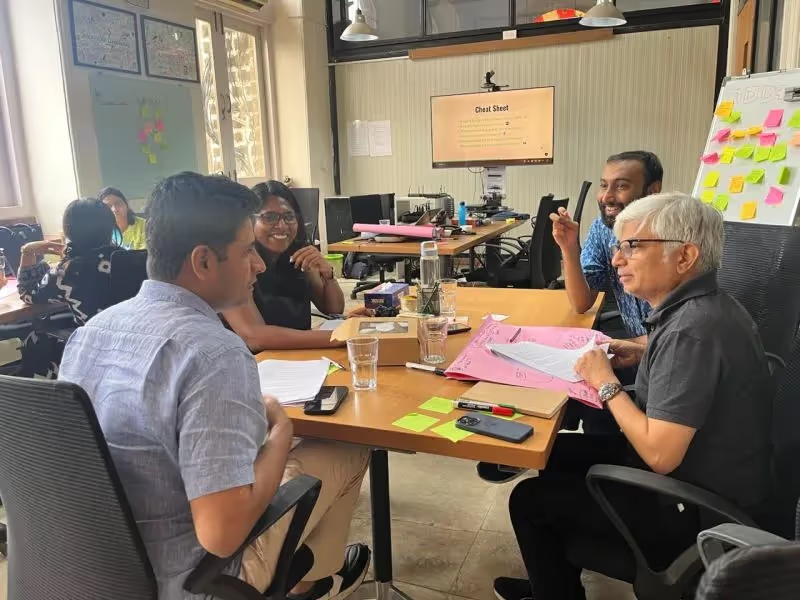
- What we do best: We work with AI and SaaS founders to build coherent design systems, UX patterns, and brand identities that mature with the product. Our strength lies in turning abstract concepts into tangible interfaces while thinking deeply about the problem space.

- Ideal for: Seed to Series A startups needing clarity and velocity without hiring a full design department. Teams looking for ongoing support through sprints, launches or rebrands.
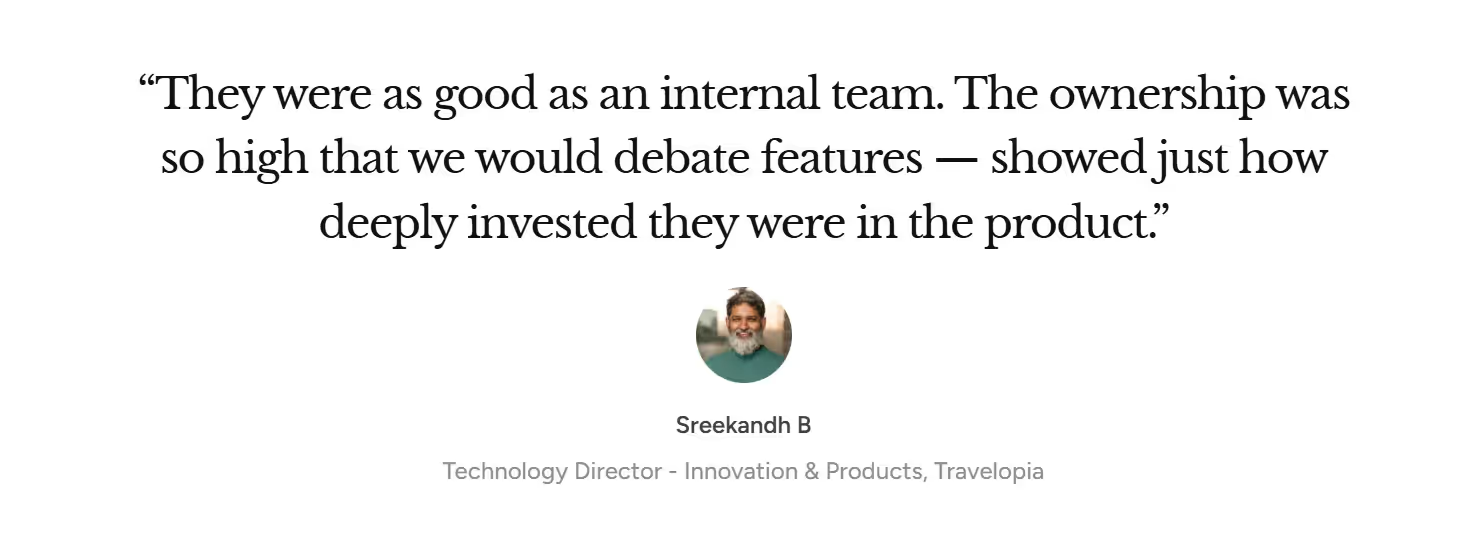
2. Superside

- Overview: Superside offers subscription‑based design support. Teams pay a flat monthly fee for access to a pool of designers who can produce marketing assets, decks, social posts or UI mockups.
- What they do best: 24/7 availability and quick turnarounds. Their model is built for marketing teams that need ad creatives, illustrations, or slide decks on demand.
- Ideal for: Marketing leaders who value predictable costs and a wide range of skills without managing individual freelancers.
- Link: superside.com
3. Design Pickle
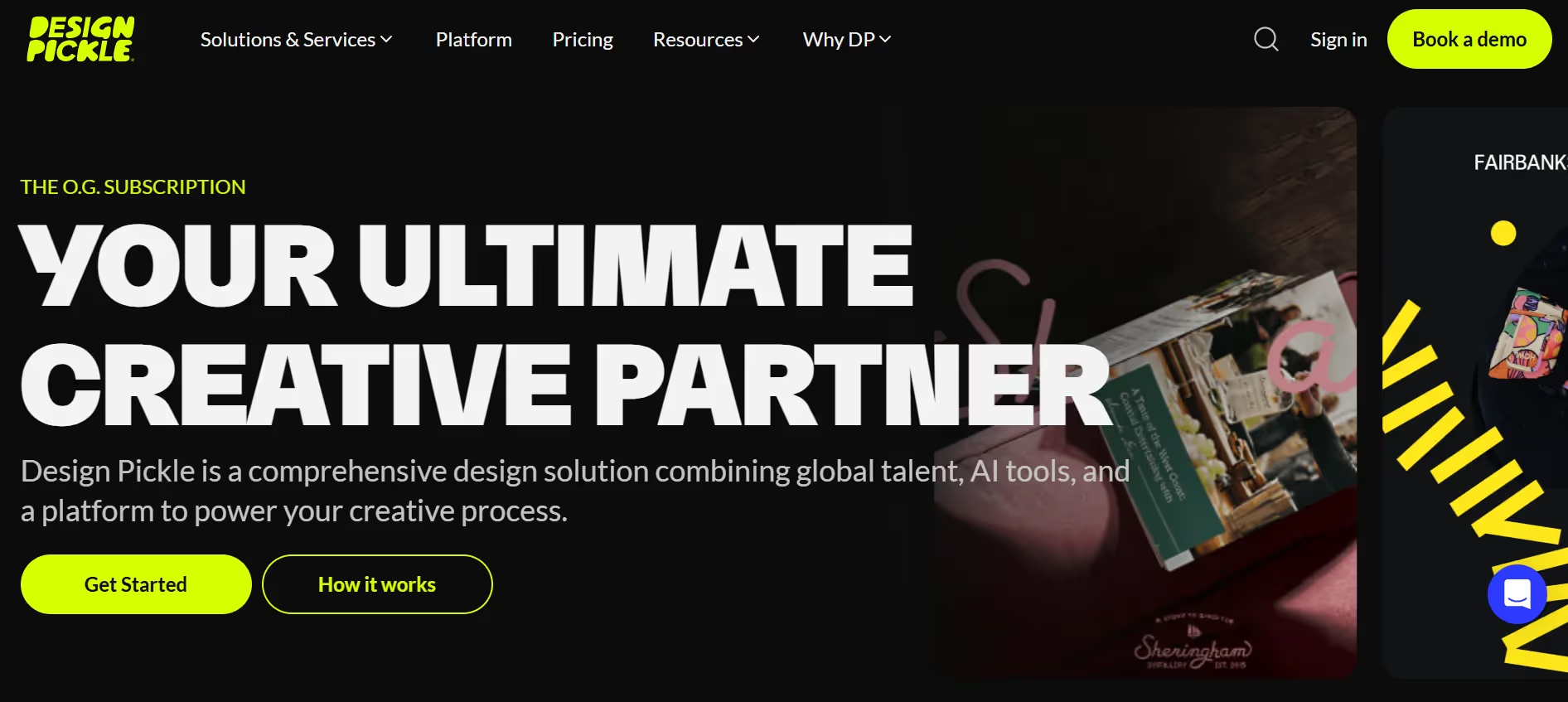
- Overview: One of the original flat‑rate graphic design services, Design Pickle assigns customers to dedicated designers under a monthly subscription. Briefs are submitted through their portal and assets are returned within a day or two.
- What they do best: Simplicity. If you need basic graphics, social media assets, or e‑books quickly, their streamlined process works well.
- Ideal for: Small businesses or startups with frequent but straightforward design needs who prefer working with the same designer over time.
- Link: designpickle.com
4. Growmodo
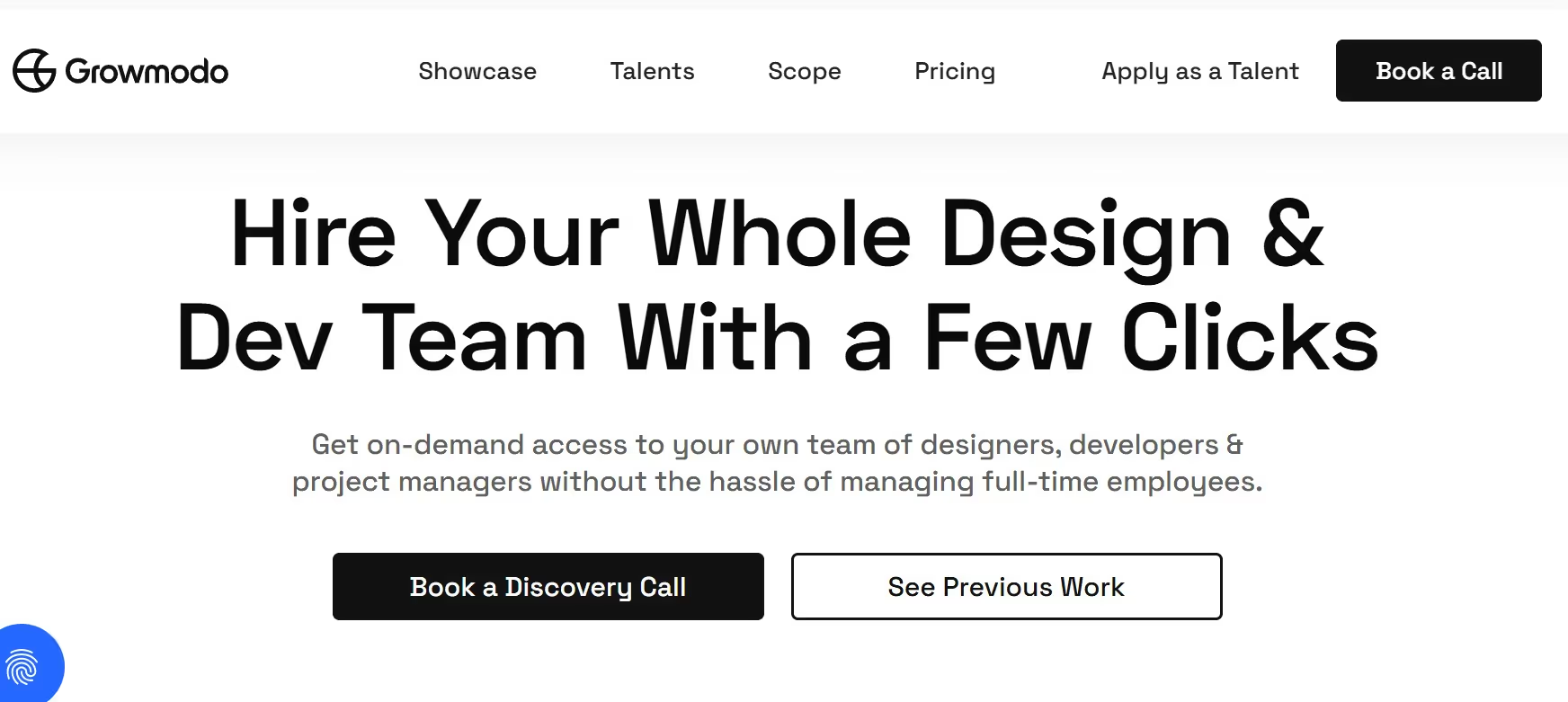
- Overview: Growmodo provides unlimited design and web‑development tasks under a subscription model. Clients can request landing pages, WordPress updates, marketing graphics or simple web apps.
- What they do best: Blending design and development. Their asynchronous process makes it easy to submit tasks and get results without daily meetings.
- Ideal for: Marketing and product teams that require both design and front‑end development support but aren’t ready to hire separate full‑time roles.
- Link: growmodo.com
5. ManyPixels
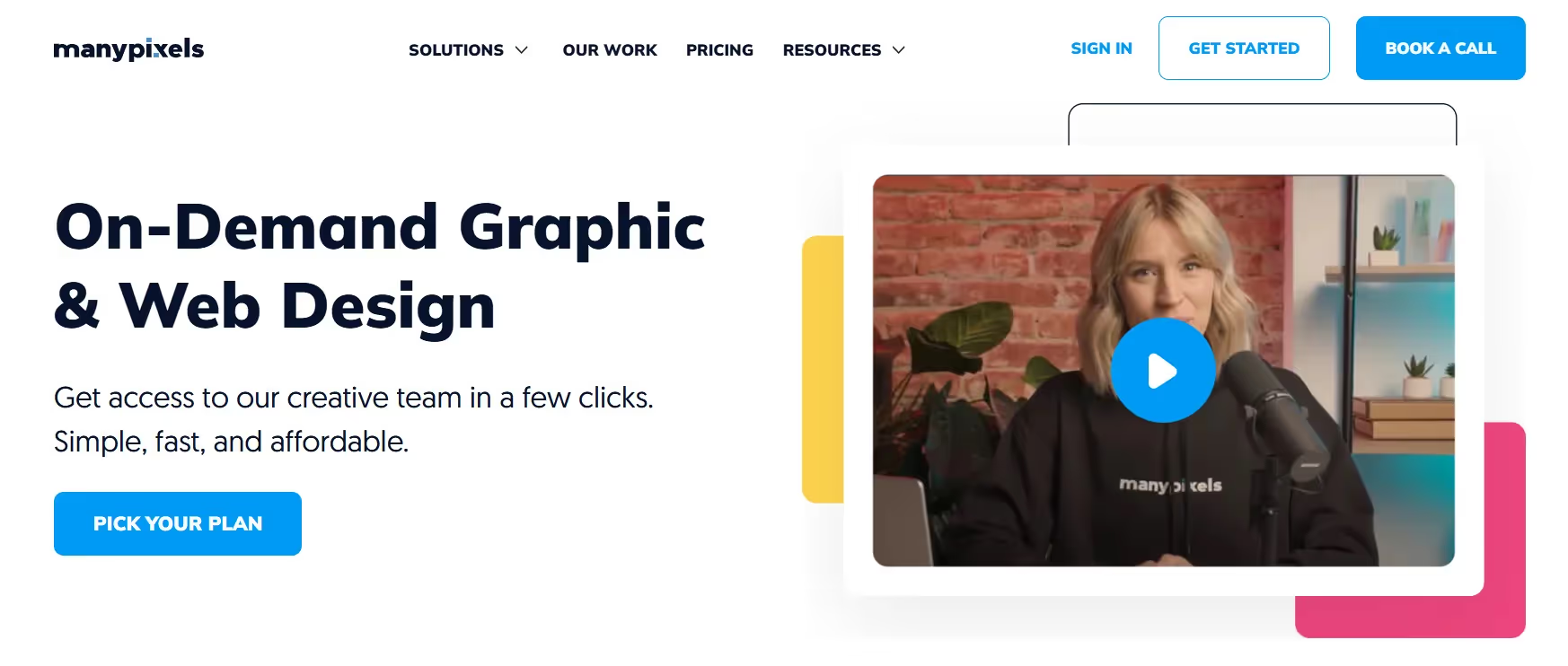
- Overview: ManyPixels is an on‑demand design service offering next‑day turnaround on a variety of tasks: slide decks, social media graphics, illustrations, and simple landing pages. Different tiers offer access to more advanced capabilities like custom illustrations.
- What they do best: Speed and flexibility. Subscriptions can be paused or upgraded, which is helpful for campaign‑driven work.
- Ideal for: Marketing teams and early‑stage product leaders who need a steady stream of visuals but don’t have the volume to justify a full‑time hire.
- Link: manypixels.co
6. HireWithNear

- Overview: Instead of handling tasks for you, HireWithNear helps recruit full‑time designers in Latin America. They vet candidates, handle payroll and HR, and place them inside your team.
- What they do best: Building offshore teams with timezone overlap for North American and European clients. You get dedicated people without worrying about legal or payroll complexity.
- Ideal for: Companies ready to grow a design team but priced out of hiring locally. Works well if you want a long‑term teammate rather than ad‑hoc support.
- Link: hirewithnear.com
7. Fiverr Pro and Upwork Talent Cloud
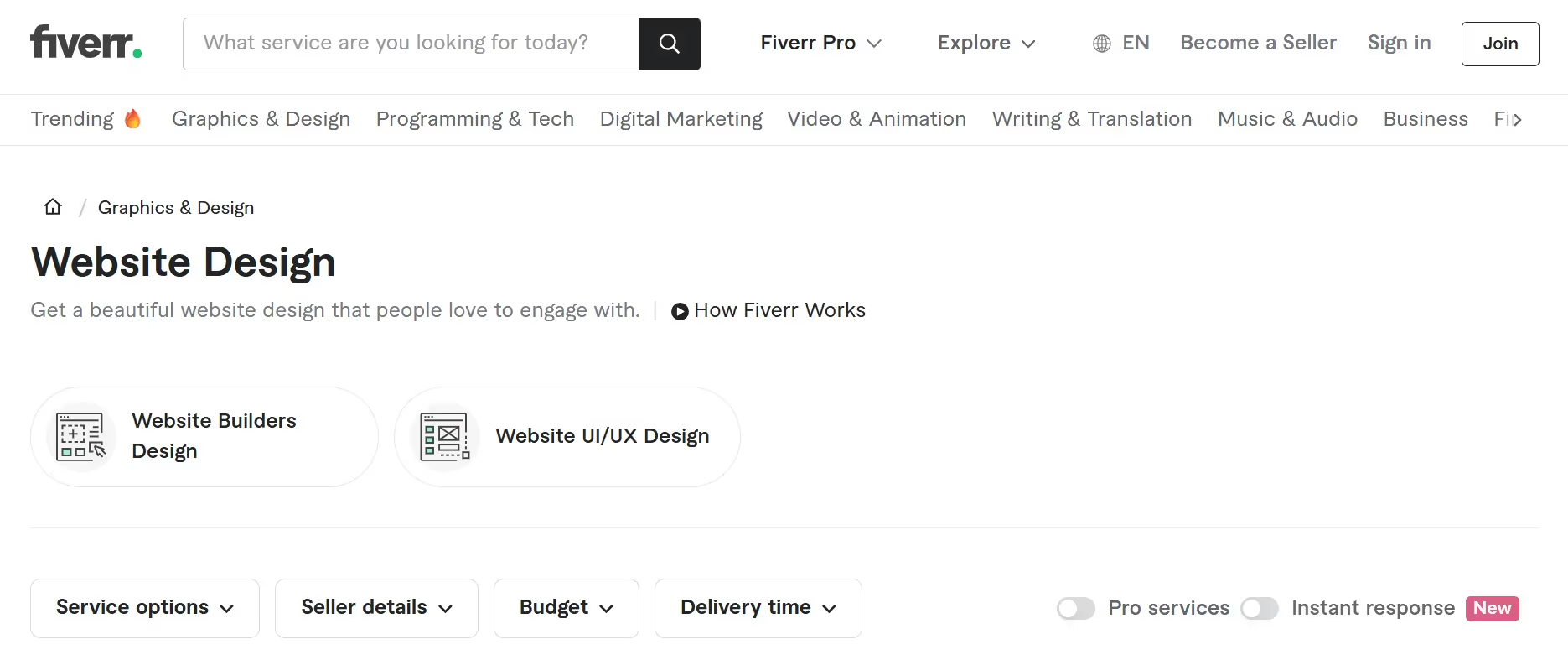
- Overview: Both Fiverr’s Pro tier and Upwork’s Talent Cloud curate freelance designers who have been vetted for quality. You post a project or browse portfolios, then hire individuals for a set scope.
- What they do best: Large talent pools and flexibility. You can find a specialist for anything from icon design to mobile UX research. It’s ideal for one‑off tasks or short engagements.
- Ideal for: Teams that have clear scopes and are comfortable managing freelancers directly. Also good for testing multiple designers before committing to a longer partnership.
- Links: fiverr.com/pro and upwork.com
8. Ramotion
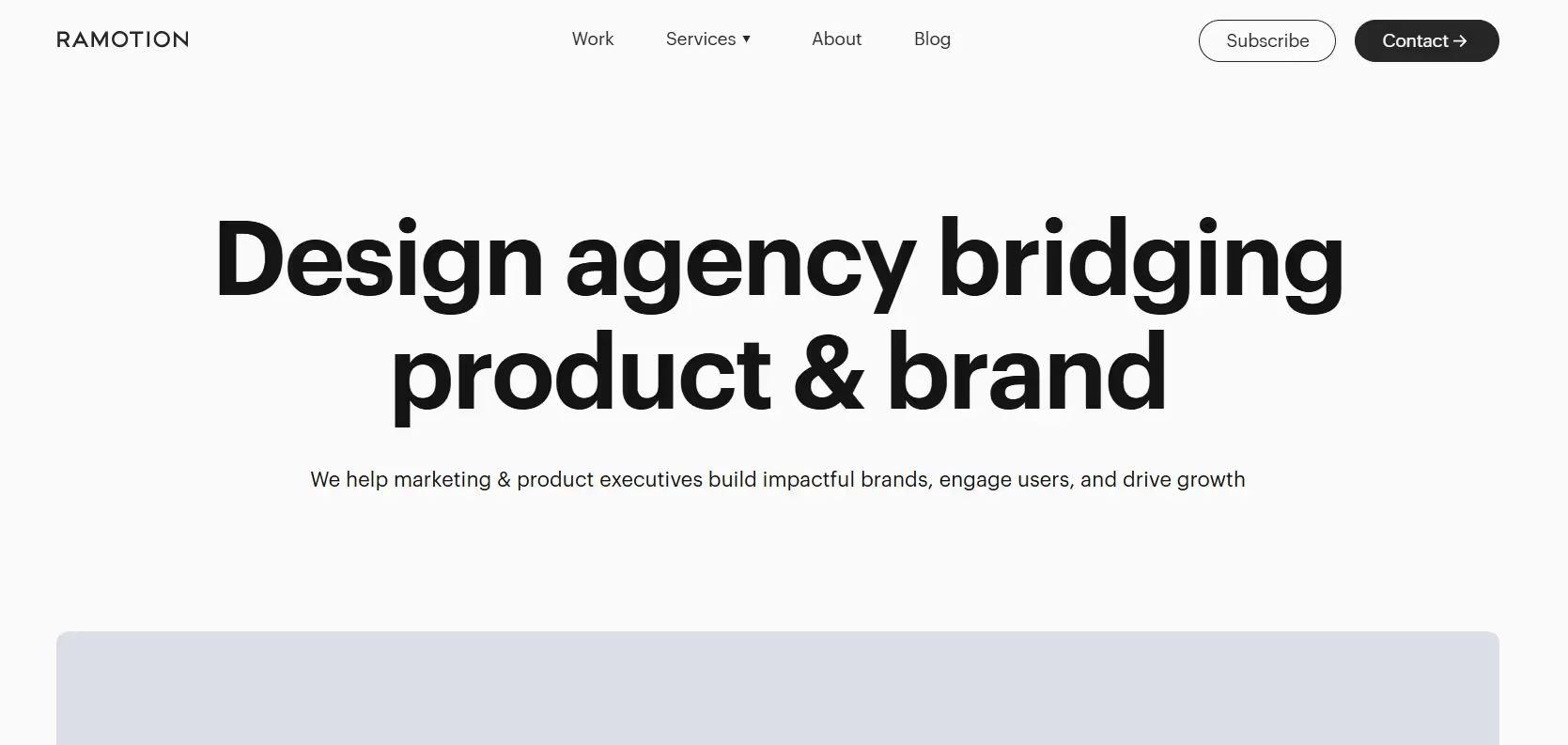
- Overview: Ramotion is a full‑service design agency known for bridging product and brand. Their website describes them as helping marketing and product executives build impactful brands, engage users and drive growth.
- What they do best: High‑end UI/UX and branding. They’ve created iconography for Stripe and redesigned websites for companies like Xero and Descript. Their case studies show 30% improvements in customers’ ability to find support content and contributions to acquisitions.
- Ideal for: SaaS companies and scale‑ups that want a polished redesign or design system and are ready to invest in a comprehensive engagement.
- Link: ramotion.com
9. Penji

- Overview: Penji positions itself as a budget‑friendly design subscription. Clients pay a monthly fee for unlimited graphic design tasks, from social media images to packaging concepts.
- What they do best: Low cost and simplicity. The service is built for quick requests and basic graphic needs.
- Ideal for: Solopreneurs, e‑commerce sellers or agencies with predictable creative workloads but tight budgets.
- Link: penji.co
10. Kimp
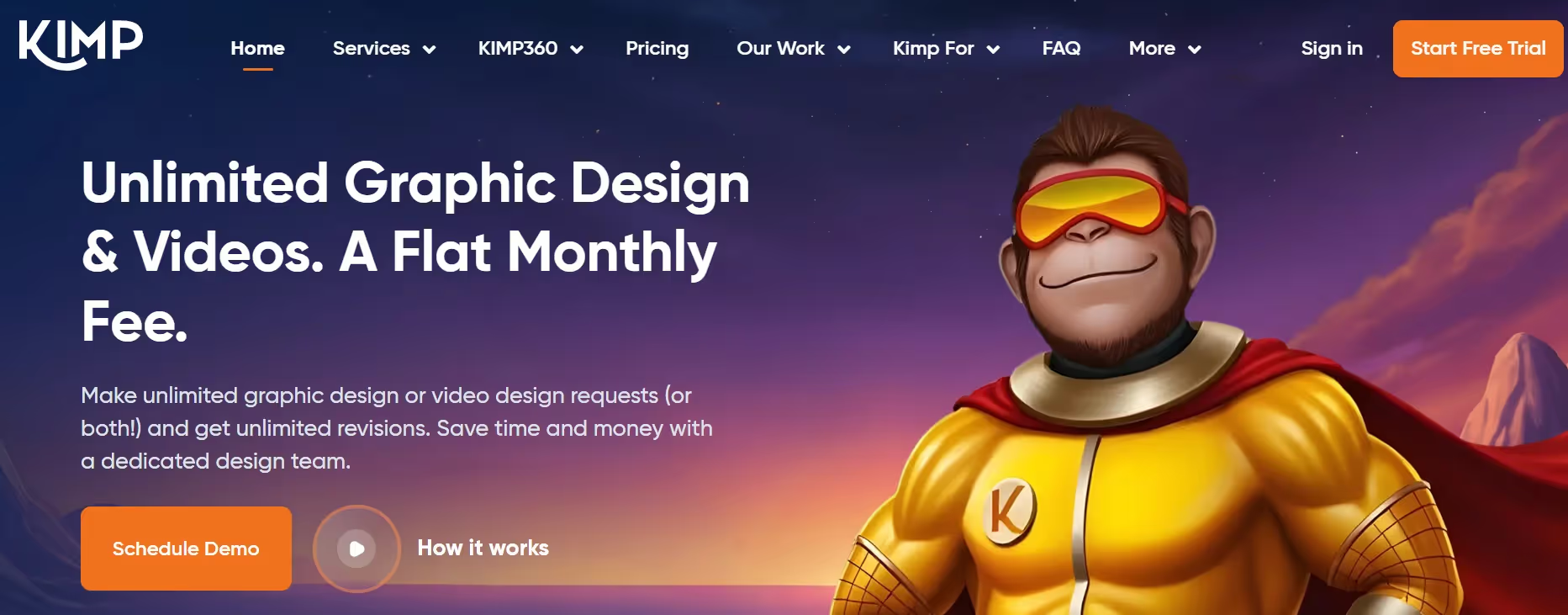
- Overview: Kimp offers a subscription model for both graphic and video design. Customers can queue up tasks, and a dedicated team works through them in order.
- What they do best: Versatility. They handle social posts, infographics, short video ads, and even simple animations.
- Ideal for: Marketing teams that need visual and motion content without hiring separate designers and editors.
- Link: kimp.io
How to choose the right design partner?
1) Match your needs to the service model
Before you compare portfolios, think about what you actually need. Do you have a one‑off project like a landing page? A project‑based contract or freelancer might be perfect. Are you producing a steady stream of marketing graphics? Then a subscription service provides predictable spend. If you’re planning a complete product overhaul, a retainer or agency engagement gives you consistent guidance over several months.
2) Check compatibility and workflow
Tools and working hours matter more than you expect. Does the provider use Figma, Slack, or Trello? Do they have experience working asynchronously across time zones? According to the 2024 Deloitte survey, 70% of businesses no longer see cost as the primary reason to outsource; improving access to talent and managing customer demands rank higher. That means you should evaluate not only the price but also how well they integrate with your team and culture.
3) Evaluate portfolio and process
Look at past work, but go deeper: do the case studies explain the problem, the process and the result? Do they show evidence of impact? Ask potential partners about their discovery process, user research methods and handoff practices. A strong partner isn’t just making pictures; they’re solving problems with you.
4) Test with a small project
If you’re unsure, start with a limited scope: a pitch deck, a landing page, or a feature revamp. This lets you evaluate communication, turnaround time and quality without committing to a long contract. Many subscription services also offer trial periods. Use this time to observe whether the designers ask good questions and handle feedback well.
5) Prioritize communication and collaboration
The best outsourced relationships feel like an extension of your team. Agree on channels for updates, revision cycles and deadlines. Ask how they document decisions and design rationale so you’re not guessing when you iterate later. In our work, we use shared Figma files and Slack threads to keep clients involved, ensuring they understand not just what we create but why.
Conclusion
Outsourcing design isn’t a cheap fix; it’s a way to stay focused on your core mission while ensuring the product looks and feels professional. In our experience, the right outsourced design services partner can help you grow without the friction of recruiting or managing a large design team.
Research shows that companies with strong design practices grow revenues at nearly twice the rate of their peers. Meanwhile, the market for outsourcing is projected to top half a trillion dollars by 2030. The trend is clear: more teams will rely on external partners to stay nimble.
Whether you need a full product redesign or a steady flow of social graphics, there’s a model that fits your needs. Start small, find a rhythm that works, and treat outsourced designers as collaborators rather than faceless vendors. With the right partnership, you’ll ship faster and learn more—without ballooning your payroll.
FAQ
1) What is design outsourcing?
Design outsourcing means hiring external professionals—freelancers, agencies, or remote teams—to handle visual, branding or user‑experience work instead of relying solely on in‑house staff. It allows companies to access specialized expertise and scale up or down without the commitment of full‑time hires. Deloitte’s 2024 survey found that access to talent was a more common driver than costprialto.com.
2) Can a graphic designer be outsourced?
Yes. Many businesses already do. A 2025 survey cited by Skillademia shows that while 41% of companies employ in‑house designers and 35% create assets themselves, about 24% outsource their digital design needs. Outsourcing tasks like social media graphics, ad creatives, or even interface layouts lets teams stay flexible and tap into skills they don’t have internally.
4) How do I reach out to a design agency?
Start by reviewing their portfolio to see if their work fits your product and values. Then send a concise inquiry or book a call through their site. Share your goals, timeline and budget upfront so both sides can assess fit quickly. When contacting an agency like Ramotion or Parallel, asking about their process and communication style will help you understand whether they can support your project effectively.





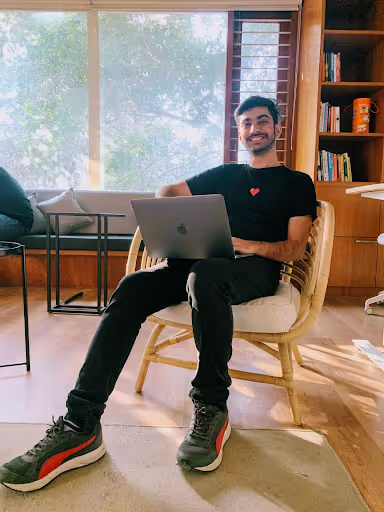

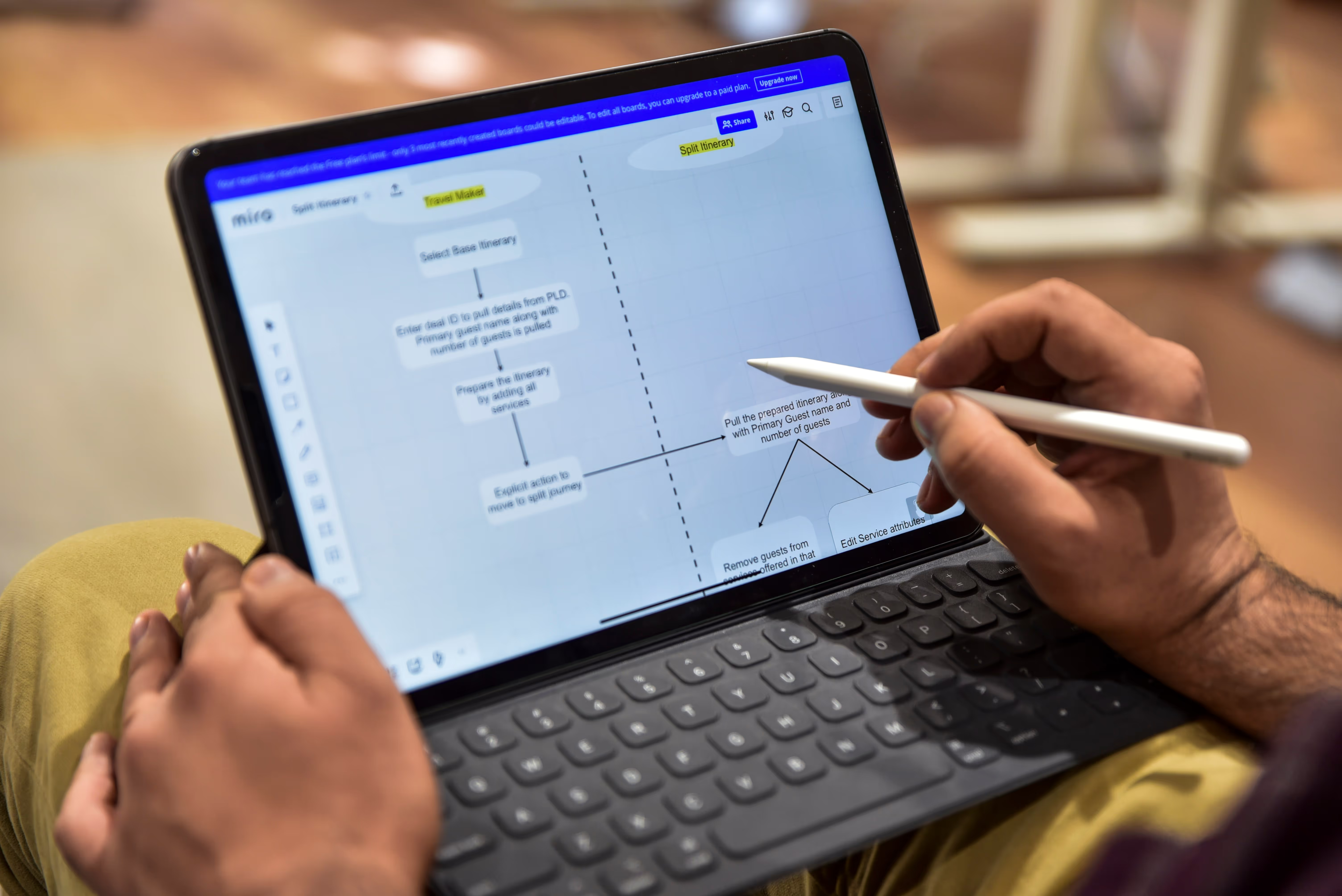

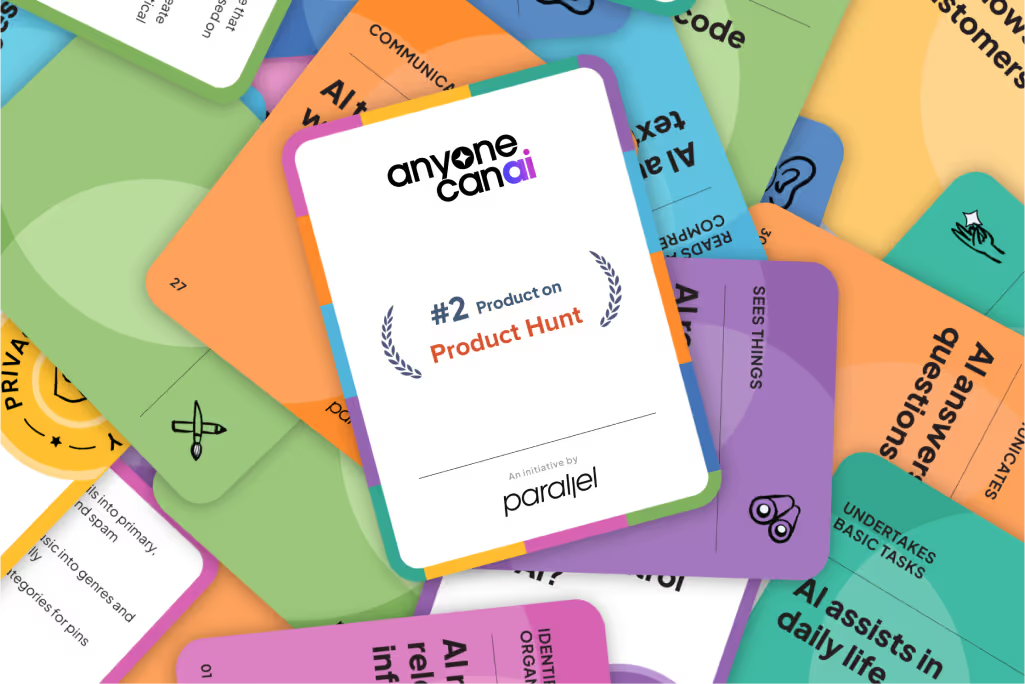

.avif)

